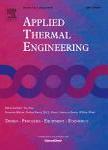版权所有:内蒙古大学图书馆 技术提供:维普资讯• 智图
内蒙古自治区呼和浩特市赛罕区大学西街235号 邮编: 010021

作者机构:Univ Fed Ceara Dept Engn Quim BR-60455760 Fortaleza Ceara Brazil
出 版 物:《APPLIED THERMAL ENGINEERING》 (实用热力工程)
年 卷 期:2011年第31卷第6-7期
页 面:1172-1175页
核心收录:
学科分类:0820[工学-石油与天然气工程] 080702[工学-热能工程] 08[工学] 0807[工学-动力工程及工程热物理] 0802[工学-机械工程] 0801[工学-力学(可授工学、理学学位)]
主 题:Heat exchanger Logarithmic mean temperature difference Heat transfer Transport processes Design Unit operations
摘 要:The logarithmic mean temperature difference (Delta T-LM or LMTD) is a corner stone concept used in the design and analysis of heat transfer equipment, such as heat exchangers. The LMTD methods are well established in the Chemical Engineering framework and, in general, apply a counterflow LMTD corrected by some factor to assess the true mean temperature difference between the fluids exchanging heat. The counterflow LMTD is used because it is undoubtedly believed that its value for two countercurrent streams is higher than when the same streams are arranged in concurrent flow. Although this principle may be supported by direct comparison between the counterflow and parallel flow LMTD s for any given process conditions, a demonstration of its universal validity is not found in the literature. This article presents a proof founded in mathematical and physical arguments that this belief is indeed a fact. (C) 2010 Elsevier Ltd. All rights reserved.